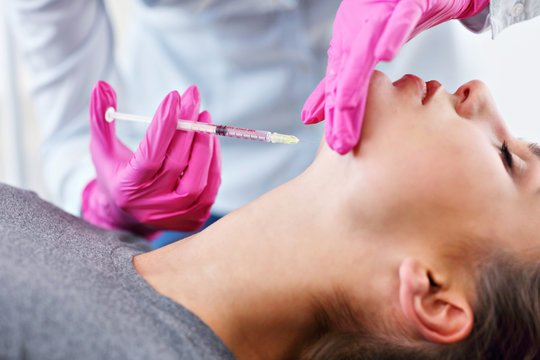Vaginoplasty, a surgical procedure aimed at reconstructing or enhancing the vaginal canal, has become increasingly popular in recent years. Whether performed for medical, cosmetic, or gender-affirming reasons, the benefits and risks of vaginoplasty are essential for individuals considering the procedure. In this article, we will explore the key aspects of Vaginoplasty(تجميل المهبل), providing valuable insights into what the procedure entails, its potential benefits, the risks involved, and what you can expect before, during, and after the surgery.
What is Vaginoplasty?
Vaginoplasty is a surgical procedure designed to reconstruct or rejuvenate the vagina, addressing a variety of issues ranging from congenital conditions, aging, trauma, or gender transition. In some cases, it can also be performed for cosmetic reasons to improve the appearance or functionality of the vaginal area.
This procedure can involve tightening the vaginal walls, altering the vaginal opening, or creating a neovagina in individuals who do not have one (e.g., transgender women). Vaginoplasty can significantly improve the patient’s physical and emotional well-being, but like any surgery, it also comes with potential risks that need to be considered carefully.
The Benefits of Vaginoplasty:
Vaginoplasty offers numerous potential benefits, depending on the individual’s reasons for undergoing the procedure. These benefits can range from enhancing physical function to improving psychological well-being.
Restoring Vaginal Function After Childbirth:
Many women experience changes in vaginal tone and elasticity after childbirth, particularly if they have had multiple pregnancies or a traumatic delivery. Vaginoplasty can help restore vaginal tightness and function, reducing discomfort during intercourse and enhancing sexual satisfaction.
Gender-Affirming Surgery:
For transgender women, vaginoplasty is an essential component of gender-affirming surgery. The procedure involves the creation of a neovagina, which helps align the individual’s physical appearance with their gender identity. This can have profound psychological benefits, improving body image, self-esteem, and overall quality of life.
Improving Sexual Satisfaction:
Vaginoplasty can improve sexual satisfaction for some individuals by tightening the vaginal walls, enhancing sensitivity, and increasing overall pleasure during intercourse. This can lead to improved intimacy in relationships and a greater sense of self-confidence.
Addressing Congenital or Medical Conditions:
Some individuals are born with congenital conditions such as vaginal agenesis (absence of the vagina) or other anatomical issues that affect vaginal function. Vaginoplasty can help in the reconstruction or creation of a functional vaginal canal, which may greatly improve the individual’s quality of life and physical health.
Cosmetic Enhancement:
For those seeking cosmetic improvement in the appearance of the vaginal area, vaginoplasty offers the possibility of enhancing the aesthetics of the vagina. This may involve tightening or reshaping the vaginal walls to create a more youthful appearance.
The Risks of Vaginoplasty:
While the benefits of vaginoplasty can be significant, it is also important to consider the potential risks and complications associated with the surgery. Understanding these risks will help individuals make informed decisions about whether the procedure is right for them.
Infection:
As with any surgical procedure, there is a risk of infection following vaginoplasty. Infection can occur at the surgical site, which can lead to complications such as delayed healing or scarring. To minimize the risk of infection, patients are typically prescribed antibiotics before and after the procedure, and it is important to follow post-operative care instructions closely.
Bleeding and Hematoma:
Bleeding is another common risk associated with any surgery. While major bleeding is rare in vaginoplasty, there is a possibility of developing a hematoma (a collection of blood under the skin) in the vaginal area. This may require further intervention to drain the blood and prevent complications.
Scarring and Adhesions:
Scarring is an inevitable consequence of surgery, but excessive scarring or the formation of adhesions (internal scar tissue) can cause complications. In some cases, adhesions can result in painful intercourse or discomfort. A skilled surgeon will take care to minimize scarring and ensure proper healing.
Urinary and Bowe:
As with any surgery, the use of anesthesia carries inherent risks, including allergic reactions, breathing difficulties, or complications related to underlying health conditions. These risks are typically managed by an experienced anesthesiologist and are less common in healthy individuals.
Dissatisfaction with Results:
In some cases, patients may not be satisfied with the aesthetic or functional outcomes of vaginoplasty. This may be due to complications during the procedure, unrealistic expectations, or issues with post-operative healing. It is essential to have a thorough consultation with the surgeon beforehand to discuss goals and potential outcomes.

Recovery After Vaginoplasty:
The recovery process following vaginoplasty is an important consideration for anyone thinking about undergoing the procedure. Proper aftercare is essential for ensuring the best possible outcome and minimizing the risk of complications.
Rest and Care:
After vaginoplasty, patients are typically advised to rest and avoid strenuous physical activity for several weeks. Lifting heavy objects or engaging in sexual activity should be avoided during the recovery period to allow the tissues to heal properly. Pain management, typically in the form of prescribed medications, will help ease any discomfort during the healing process.
Follow-up Appointments:
Regular follow-up appointments with the surgeon are important for monitoring the healing process. The surgeon will check for any signs of infection, scarring, or other complications. During these visits, the patient will also receive instructions on how to care for the surgical site to promote healing.
Gradual Resumption of Activities:
Over time, patients can gradually resume normal activities, including sexual intercourse, which is typically cleared by the surgeon after a certain healing period. This is crucial to ensure that the neovagina or repaired vaginal canal is functioning properly and that the individual is comfortable with their new anatomy.
FAQs About Vaginoplasty:
How long does it take to recover from vaginoplasty?
The recovery time for vaginoplasty can vary depending on the individual and the specifics of the procedure. Generally, patients can expect to take 6 to 8 weeks off from strenuous activities, while full recovery can take up to 6 months.
Is vaginoplasty covered by insurance?
In some cases, insurance may cover the cost of vaginoplasty, particularly for medical or gender-affirming procedures. It is essential to check with your insurance provider ahead of time to understand coverage options and any necessary documentation.
Will vaginoplasty affect sexual pleasure?
For many individuals, vaginoplasty can enhance sexual pleasure by improving vaginal tightness and sensation. However, the outcomes can vary from person to person, and some may experience a decrease in sensation or discomfort. Discussing your goals with the surgeon can help manage expectations.
What is the difference between vaginoplasty and labiaplasty?
Vaginoplasty focuses on the reconstruction or creation of the vaginal canal, while labiaplasty involves the cosmetic reshaping or reduction of the labia (the outer folds of skin around the vagina). These are two distinct procedures, although they can sometimes be performed together.
Is vaginoplasty safe for transgender women?
Vaginoplasty is a safe and effective option for many transgender women as part of their gender-affirming surgery. It is important to choose a skilled surgeon with experience in transgender care to ensure the best possible results and minimize risks.
Conclusion:
Vaginoplasty(تجميل المهبل) is a highly personal decision that can offer significant physical and emotional benefits for individuals seeking to address functional, medical, or cosmetic concerns. However, like any surgery, it comes with potential risks that need to be weighed carefully. By understanding the benefits, risks, and recovery process, individuals can make informed choices about whether vaginoplasty is the right option for them. Consulting with a board-certified surgeon and discussing expectations is crucial to achieving the desired outcomes.
















Leave a Reply